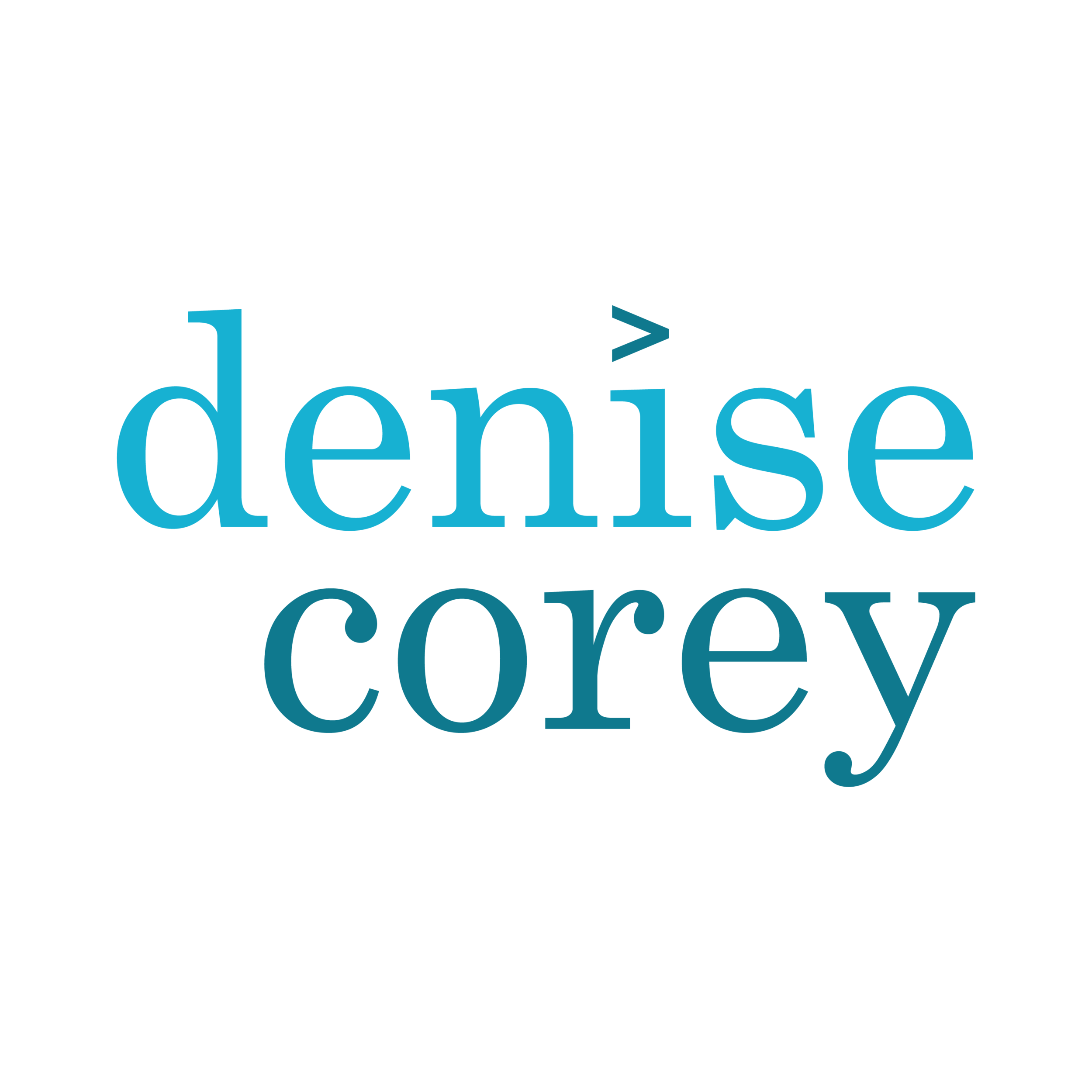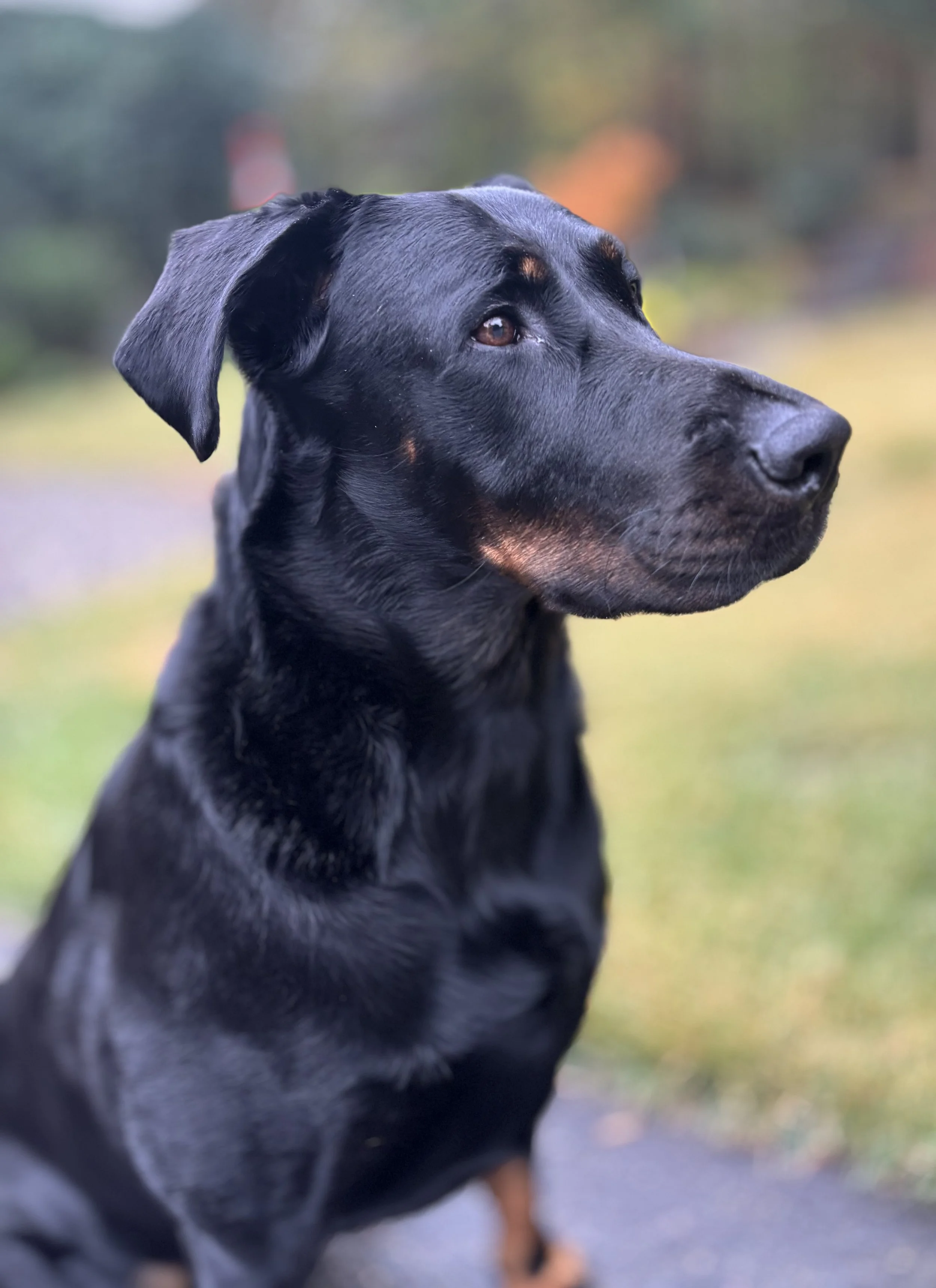A Real Life Fairy Tale
The Compass and the Coyote
Once upon a time…
There was a mature woman—me—and a young, spirited dog named Clicquot. Each morning, we wander the woods together, two companions bound by quiet understanding. One warm summer day, our familiar walk took an unexpected turn.
We often walk in the woods about 20 minutes from my house. The forest stretches for hundreds of acres, threaded with gravel roads and winding trails. I prefer to walk early, before the day grows loud—when the air is cool, the light soft, and the world still half-asleep.
Clicquot is a 130-pound Beauceron, a French shepherd—powerful, intelligent, and gentle. He rarely strays far, and his recall is perfect. I leash him only when he signals the presence of others. Otherwise, he runs free, his dark coat flashing between the trees, a shadow with a heartbeat.
That morning, the air was heavy, the kind that clings to your skin and breath. Though the sun was barely risen, the warmth was already pressing down. We began on the gravel road, then turned down a smaller path—a familiar detour I thought might lead us to water.
We wandered deeper, my turns increasingly aimless. The forest began to feel new, alive with the thrill of discovery. And then—Clicquot stopped.
He turned to me, eyes questioning. I saw nothing amiss ahead and urged him on, but he pressed close, his body tense. Then I saw it: what I thought, at first, was a thin, stray dog. But as it moved closer, sleek and silent, I realized—it was a coyote.
I’d seen one before, a ghost at the edge of the woods, but this one lingered. Clicquot stepped forward, alert yet curious. I called him back, and he obeyed instantly. The coyote followed, not menacing, but watchful—almost playful, like a mirror version of my own dog.
We jogged away, the sound of our footsteps scattering the silence and I saw when I glanced back that the coyote followed for a while. I took a turn, then another, searching for the familiar curve of a path, the glint of a road. Clicquot stayed close, ever watchful. When we broke through the trees into a meadow, my heart sank. The coyote was there again, waiting.
He didn’t advance this time—just watched us, wary but steady. I turned us back once more. The air was thick, the morning now fully awake, and I could feel Clicquot’s breath quicken with the heat. He needed water. I needed a way out.
We tried again. Another path. Another turn. And somehow, impossibly, we emerged once more into the same meadow. The same coyote. The same stillness.
I stood there, caught in the loop, feeling the weight of repetition—the way forward circling back on itself. My trusted sense of direction had failed me.
So I stopped. I took out my phone and opened the compass. If the paths led nowhere, I would make my own. I turned north and stepped off the trail, through underbrush and brambles, trusting only that small, unwavering arrow.
After fifteen minutes, we stumbled onto a gravel road. Small puddles glistened in the dust. Clicquot drank, and I felt the cool breath of relief. A few minutes later, the trees opened, and I recognized where we were. We were homeward bound.
The encounter stayed with me. It felt like something from a fable—an animal guide, a looping path, a lesson hidden in the trees. I had walked in circles until I chose something new.
And maybe that’s the story of my life right now, too. For years, I’ve followed the same well-worn trails, circling familiar ground, waiting for something to change. But perhaps the way forward isn’t on any marked path. Perhaps it’s time to trust the compass within me—and step into the wild unknown.
Epilogue
Sometimes I think of that coyote still standing in the meadow, watching. Not threatening, not lost—simply present, belonging wholly to the moment. Maybe he wasn’t blocking my path at all. Maybe he was showing me the loop I was trapped in, waiting for me to notice.
That morning, I learned that even the most familiar places can become mazes if we keep following the same turns. That freedom sometimes requires leaving the trail entirely.
Now, when I walk those woods, I still glance into the trees and half-expect to see a glimmer of tawny fur but I haven’t tried to find that mysterious looping path again. I am ready to trust the compass I cannot see. And I walk—not to find my way back, but to find my way forward.

